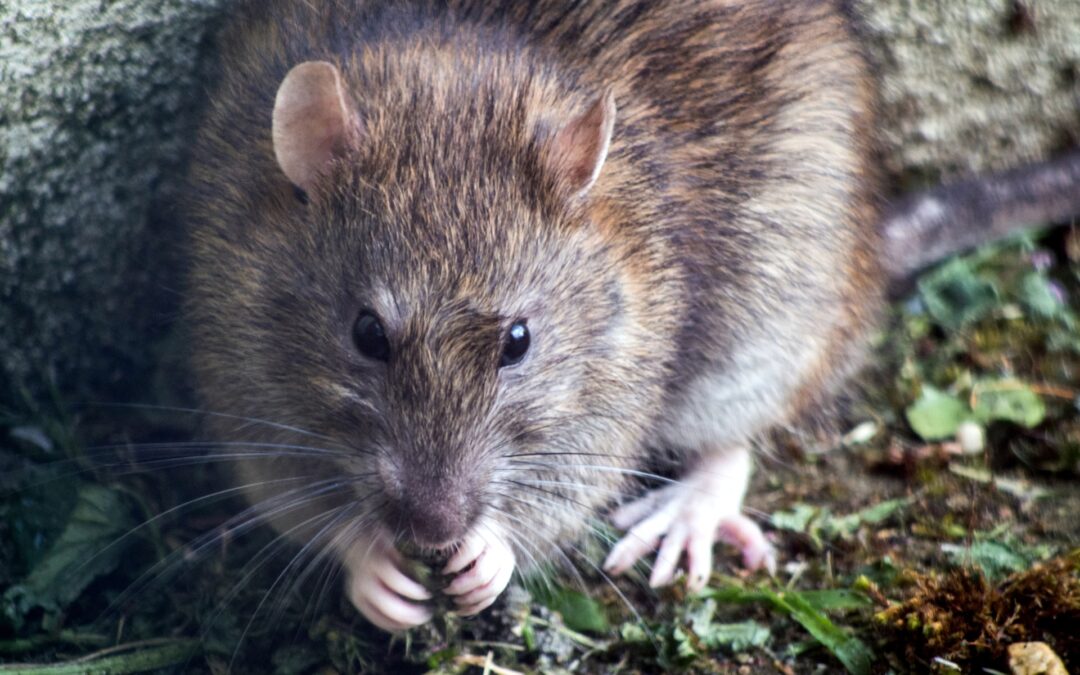Welcome! You’re here for probably one of two reasons:
- You have a rat inside your home, you’ve decided to tackle the problem yourself and are looking for a few tips from the professionals, or
- You know me personally and that I will eventually ask you “have you read my latest blog!?” and you don’t want to bruise my fragile ego by saying no.
Either way, that’s rough and I’m sorry. But to the former, you are in luck! I’ve compiled for you here all the best rat trapping advice from our in-house rodent pros. While the concept of trapping rats seems simple, there are some special considerations one must consider before starting. That rodent isn’t going to catch itself, so let’s get started, shall we?
Choosing your traps
There are a ton of options in rodent traps these days and it may be tough to figure out which is best. You can find electric zappers, glue boards, pitfall traps, cage traps, and even CO2 powered traps available in stores and online. While all of these may have their own place, it’s best to keep things simple.
For some, they would like a more humane tool and you can definitely utilize live traps. This can be successful with minor infestation but make sure to dispose of that rat well away from your home, otherwise they will be right back in! Also, take special precaution when handling live wild animals of any types, there are some serious health concerns with both rats and mice.
However, dear reader (I pull a briefcase from under the table, sit it on top and spin it to face you slowly opening it to reveal its contents), what you want is a good ol’ snap trap. Cheap, reusable, and efficient. Accept no substitutes. And while there are many iterations of this basic concept, I favor the classic wooden Victor traps with the large square faux-cheese trigger paddle. Now, what are we going to do with these?
Placing your traps
This is where things get strategic. It’s your house and you’re here reading this, so you probably have a good idea of where the rodent activity is. Look for signs of rodents such as chewing, body oil, and feces. Here are a few factors to consider when deploying your traps.
- Rats like to follow lines and will run along baseboards shelves and furniture.
- Darkness makes them feel safe and they will run from shadow to shadow.
- They are mostly nocturnal so you will see them less during the day unless there is a high population.
- They often nest in attics, sub-areas, and wall voids, coming out only for food and water.
When placing the traps, you want to group 3-5 traps in a row right next to each other. Rats are cautious creatures and fear new things, sometimes shying away from just one object if it’s by itself. Your trapping will be more successful if you group the traps together. If placing your rat traps against a wall, face the trap paddle-side towards the wall and about an inch or so away. Also, make sure to follow my Pro Tip below and anchor those traps!
Trapping in both the sub-areas and the attic spaces of your home is definitely a good idea if there is activity in those spaces.
Also, be aware that these are snap traps and they do pose a danger! Make sure that they’re placed in area where cats, puppies, babies, or curious adults won’t be able to reach. Otherwise, you might end up with a broken finger or upset Siamese.
Consider the lure
Speaking of food and water you’re going to want to bait those traps with something that the rats want to eat. We typically like to use peanut butter because it has everything you want in a bait, it’s oily and smelly with lots of protein and sugar. If the rats in your home are going for a specific food source like birdseed or dog food, you can easily incorporate these into your bait by just sticking it to the peanut butter making it even more familiar and attractive.
“Pre-baiting” your rat traps
I understand that you want to get rid of these rats as quickly as possible, and your instinct is to set those traps and be done with this. But don’t. Rats are smart and extremely cautious animals. They know their environment well and tend to avoid anything new, like the traps that are suddenly sitting outside their nest.
Even when they do approach, they will do so tentatively, which could lead to the trap being tripped without it catching the rat. This can cause the rat to become “trap shy” and it will now actively avoid anything that looks or smells like that trap. Good luck trapping that rat.
To avoid the creation of a trap shy rat, you can place your traps in what we call pre-bait which is a trap that is baited but unset. This allows the rat to interact with and feed off the traps, establishing them as a trustworthy food source. It also allows you to detect activity, so when your bait disappears from the trap you can now re-bait that trap and set it. When the rat returns to eat again it will do so confidently and will be more likely to get caught.
If you aren’t doing any exclusion, and you should (see this article about exclusion) I would suggest trapping in this manner until you have gone a couple of weeks without any activity to your traps, and the issues that led to your starting your rodent trapping program have been resolved. At this point I would suggest you leave your traps in pre-bait and check them periodically, resetting the traps any time the bait disappears.
PRO TIP:
Although snap traps typically dispatch the rodent quickly they don’t always get a direct hit. If the trap only catches a rat by the hindquarters the rat can drag the trap away from its original placement. This can lead to a rat dying somewhere you can’t find it easily and stinking the place up. Avoid this by always anchoring your traps. I like to use a light gauge tie wire, then you can just attach it to something nearby.
Call in your Oregon Professional Rodent Trapping Experts!
Perhaps this all seems like an exercise in futility. Forever baiting and setting traps with no end in sight. Maybe you would prefer a more robust, permanent solution.
Our Rodent Pros here at Good Earth can help. Good Earth services Corvallis, Eugene, Salem, the central Oregon Coast, and Western Portland suburbs of Beaverton, Tigard, Wilsonville, and Lake Oswego. From trapping to advice and inspection to exclusion and ongoing maintenance we have you covered. We have a comprehensive rodent control program that will get you taken care of!
Until that time comes good luck and happy hunting. If you get good at it, we’re always hiring.
Mind your fingers,
Adam Hiddleson



